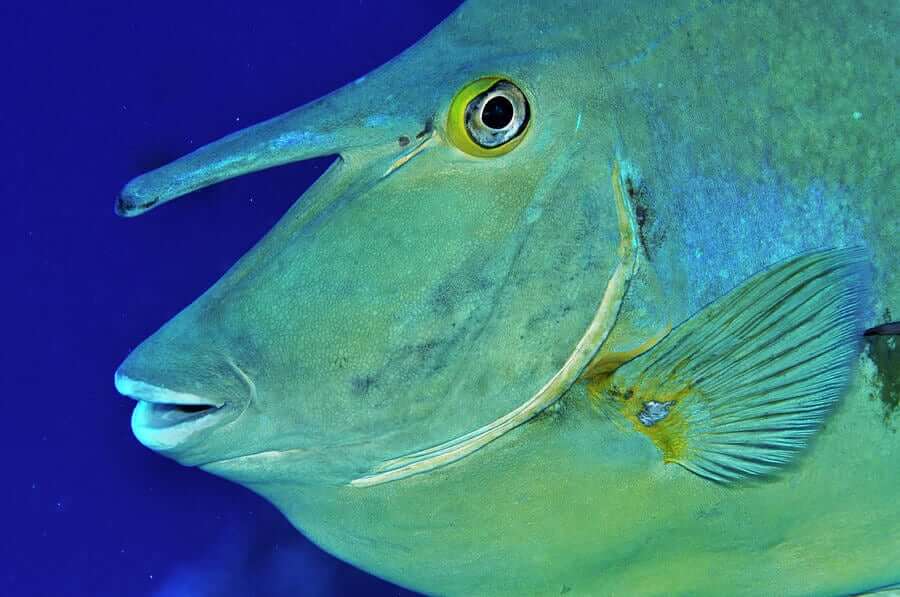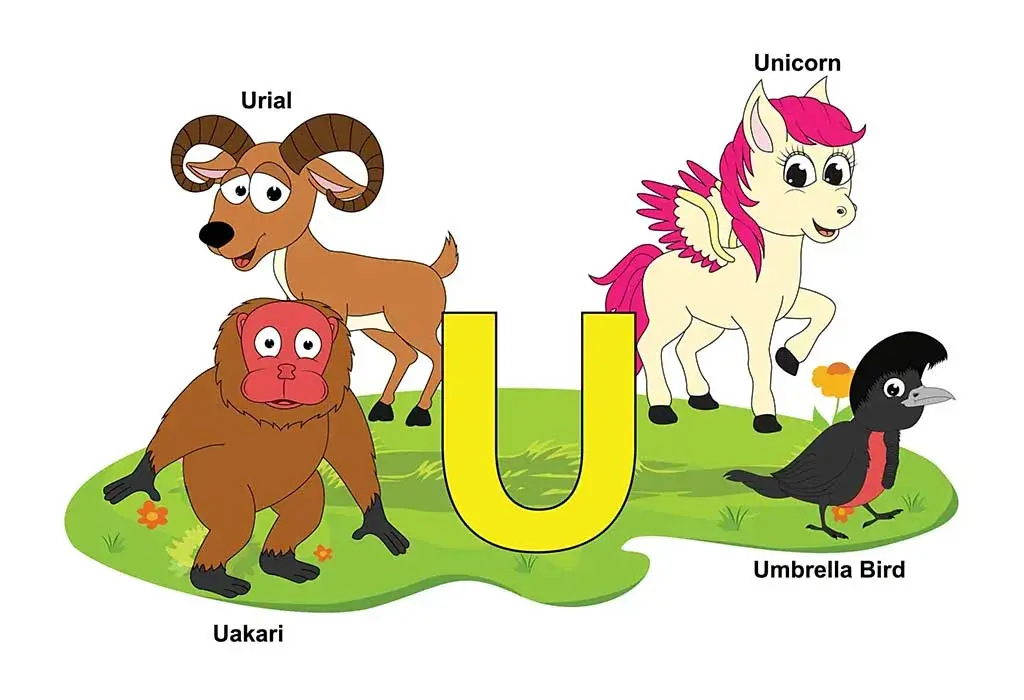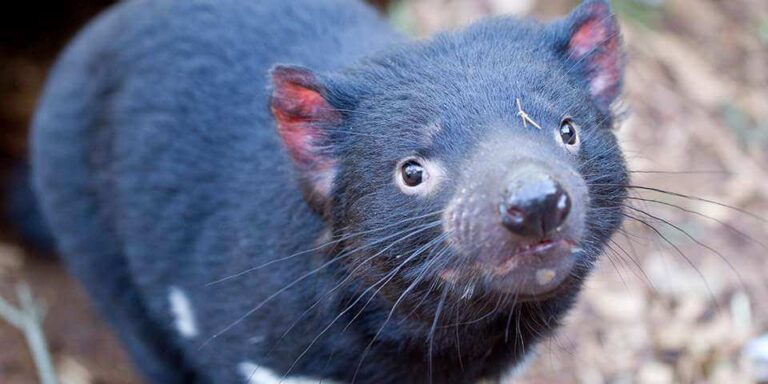Top Animals That Start With U: Fascinating Creatures You Should Know
The animal kingdom is filled with an incredible variety of species, and discovering animals that start with the letter “U” opens the door to a unique world of creatures. From animals that glide through the ocean to those that soar in the skies, the letter “U” represents some of nature’s most interesting and lesser-known species.
In this article, we will explore the top famous animals that begin with “U,” bringing you fascinating details about their characteristics, habitats, behaviors, and why they are significant to the ecosystem.
Contents
- 1 Alphabetical List of Animals That Start with U | animal with u
- 2 Top 10 Animals That Start With U | animals starting with u
- 3 1. Umbrellabird
- 4 2. Urial
- 5 3. Uakari
- 6 4. Urchin
- 7 5. Uromastyx (Spiny-tailed Lizard)
- 8 6. Uguisu (Japanese Bush Warbler)
- 9 7. Unau (Two-toed Sloth)
- 10 8. Uinta Ground Squirrel
- 11 9. Urubu (Vulture)
- 12 10. Unicornfish
Alphabetical List of Animals That Start with U | animal with u

| Uakari | Uintatherium | Upupa |
| Uaru Cichlid | Ulysses Butterfly | Upland Sandpiper |
| Uganda Kob | Umbrellabird | Ural Owl |
| Uganda Woodland Warbler | Unadorned Rock-Wallaby | Urchin |
| Uguisu | Unau (Linnaeus’s Two-Toed Sloth) | Urechis Unicinctus (Penis Fish) |
| Ultimate Shrew | Unicorn | Urial |
| Uinta Chipmunk | Unicornfish | Urial Sheep |
| Uinta Ground Squirrel | Underwing Moth | Uromastyx (Spiny-Tailed Lizard) |
| Urutu Snake | Utonagan |
More animals that start with: A | B | C | D | E | F | G | H | I | J | K | L | M | N | O | P | Q | R | S | T | U | V | W | X | Y | Z
Top 10 Animals That Start With U | animals starting with u
1. Umbrellabird

The Umbrellabird is an exotic species that catches attention with its striking appearance. Found primarily in Central and South American rainforests, this bird has a distinctive crest on top of its head, resembling an umbrella—hence its name. Umbrellabirds are known for their deep, booming calls to communicate across dense jungles. They are a shy species, often hard to spot, but their fascinating vocal abilities and unique look make them one of the most notable birds in their habitat.
- Scientific Name: Cephalopterus
- Habitat: Tropical rainforests
- Diet: Fruit and small insects
2. Urial

The Urial is a species of wild sheep found in the rugged terrains of Central Asia. These animals are well-adapted to harsh environments with their spiraling horns and thick coats. They are herbivores, grazing on grasses and shrubs, and are particularly notable for their agility in mountainous regions. Unfortunately, Urials are listed as near-threatened due to hunting and habitat loss, making conservation efforts crucial for survival.
- Scientific Name: Ovis vignei
- Habitat: Mountain ranges and grasslands
- Diet: Grasses, leaves, and shrubs
3. Uakari

The Uakari is a small primate found in the Amazon rainforest. Known for its striking red face, this monkey is adapted to life in the trees, with powerful limbs and a keen sense of balance. The Uakari’s red face is not just for looks—it’s a sign of good health, as a bright red face indicates a strong immune system. These social animals live in groups and feed on fruit, seeds, and small invertebrates.
- Scientific Name: Cacajao
- Habitat: Flooded forests of the Amazon
- Diet: Fruits, seeds, and small animals
4. Urchin

Sea urchins are spiny, globe-shaped creatures that live in oceans worldwide. While they may look simple, sea urchins play a critical role in marine ecosystems by helping to control algae growth on coral reefs. Despite their spiky appearance, sea urchins are an important food source for many predators, including otters and starfish.
- Scientific Name: Echinoidea
- Habitat: Oceans, particularly coral reefs
- Diet: Algae, plankton, and small organic particles
5. Uromastyx (Spiny-tailed Lizard)

The Uromastyx, or spiny-tailed lizard, is a species native to the arid regions of Africa and the Middle East. These lizards are herbivores, thriving on a diet of leaves, flowers, and seeds. Their most distinctive feature is their spiny tail, which they use to defend themselves from predators. Uromastyx lizards are well-adapted to hot desert environments, storing fat in their tails to help them survive during food scarcity.
- Scientific Name: Uromastyx
- Habitat: Deserts and rocky landscapes
- Diet: Vegetation, seeds, and flowers
6. Uguisu (Japanese Bush Warbler)

The Uguisu is a small bird native to Japan and East Asia. It is famous for its beautiful, melodic song that heralds the arrival of spring in Japan. Although the bird is not particularly colorful—usually brown or olive-green—it holds cultural significance, often appearing in Japanese poetry and art. Uguisus are secretive birds, typically hiding in dense foliage, but their distinctive calls make them a cherished part of the landscape.
- Scientific Name: Cettia diphone
- Habitat: Forests and bamboo groves
- Diet: Insects and small invertebrates
7. Unau (Two-toed Sloth)

The Unau, also known as the two-toed sloth, is one of the slowest mammals in the animal kingdom. Native to the rainforests of Central and South America, sloths spend most of their lives hanging upside down in trees. Their slow movements help them conserve energy, and their camouflage protects them from predators. Despite their sluggish nature, Unaus are expert climbers who descend from the trees only once a week to defecate.
- Scientific Name: Choloepus
- Habitat: Tropical rainforests
- Diet: Leaves, fruits, and flowers
8. Uinta Ground Squirrel

The Uinta Ground Squirrel is a small rodent found in the western United States, particularly in Utah, which is where its name comes from. These squirrels are highly social animals, living in colonies and using a complex system of vocalizations to communicate with each other. They are known for their foraging habits and ability to hibernate during the winter months, storing food in their burrows for times of scarcity.
- Scientific Name: Urocitellus armatus
- Habitat: Grasslands and meadows
- Diet: Seeds, grasses, and insects
9. Urubu (Vulture)

Urubus, known as New World vultures, are scavengers in the Americas. They play a crucial role in the ecosystem by feeding on carrion and helping prevent disease spread. While they may not be the most glamorous animals, vultures have excellent eyesight and a highly developed sense of smell, allowing them to locate dead animals from great distances.
- Scientific Name: Cathartes aura
- Habitat: Open fields, deserts, and forests
- Diet: Carrion (dead animals)
10. Unicornfish

Unicornfish are easily recognizable by the horn-like projection that extends from their forehead. Found in tropical oceans, particularly around coral reefs, these fish are part of the surgeonfish family. Unicornfish feed primarily on algae and are vital in maintaining the balance of coral reef ecosystems. They are popular in the aquarium trade due to their striking appearance and calm demeanor.
- Scientific Name: Naso
- Habitat: Coral reefs
- Diet: Algae and plankton
Conclusion
Animals that start with U might not be as commonly known, but each species plays a unique role in their respective ecosystems. From the mysterious Umbrellabird in the rainforests to the essential Urchin in the oceans, these creatures remind us of the diversity and wonder of the natural world. By learning more about these animals, we appreciate their beauty and recognize the importance of conservation efforts to protect their habitats and ensure their survival for future generations.
- Are Rottweilers Good With Kids? Reasons & Training Tips - 17 September 2025
- How Long Are Dogs Pregnant: Complete Guide - 16 September 2025
- German Shepherd Doberman Mix: Info, Pictures, Care & More - 11 September 2025







